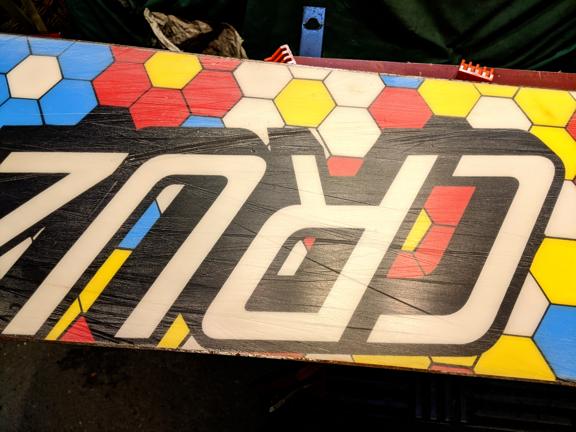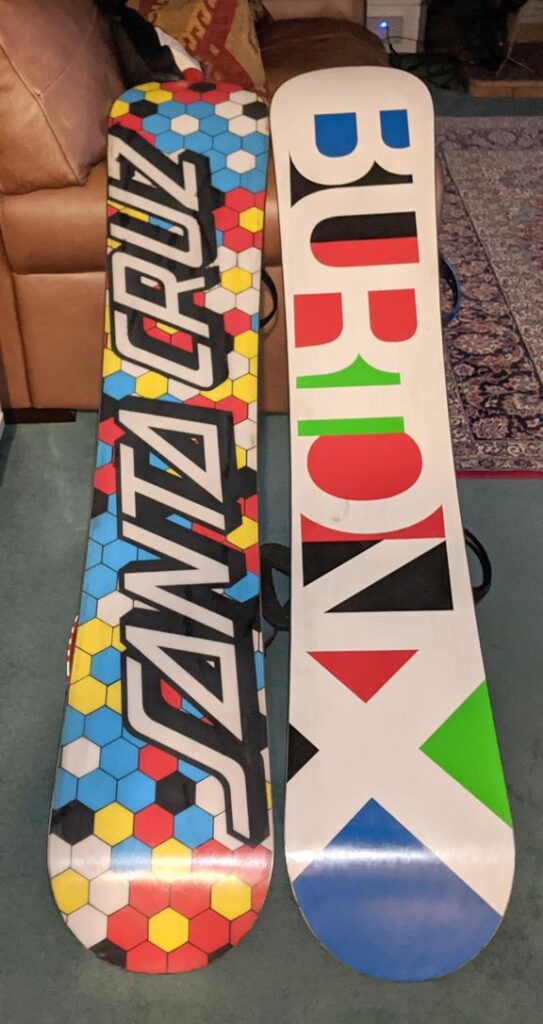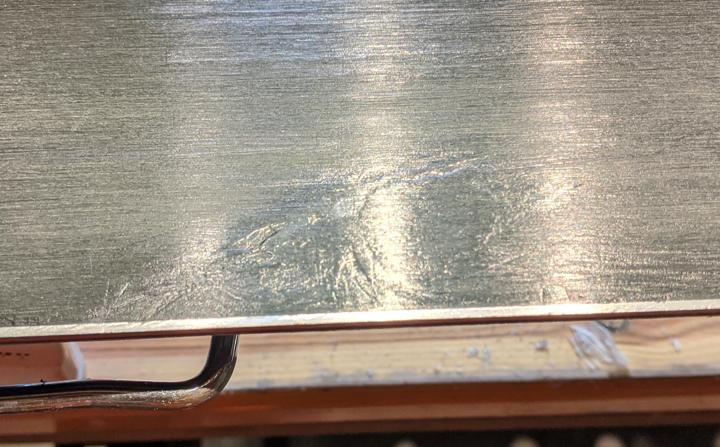I figured when I stopped all advertising for the Cave that I would only get happy smiling returning clients dropping off equipment that I had already sorted. It was going to be sooooo straightforward. So somehow I ended up with 3 new sets of skis and 2 new boards in the shop. Best laid plans and all that.
Richard dropped off his Santa Cruz board for some attention. “Edge and wax and the base might need some attention” were I think his exact words on the phone:


So the board looks like it’s been helping to defend the rebels in Idlib for the last 6 weeks. Starting point once any remaining wax has been cleaned off (ha!) is to check the board is nice & flat. Oops! the board seems to have been designed with a prominent central ridge and wings, a bit like a Bataleon board. There’s plenty of marketing guff on the website about their various longitudinal profiles (“Go Big! Rocker” anyone?) but they don’t seem to have done this weird W-shape transverse profile on purpose. A few runs with the big SkiVisions planer indicated that taking down the centre to make the board flat would result in no P-tex in the centre. That would be a shame as, and I’m quoting directly from their website here, their bases feature: “Nano-additives boost acceleration up to formula one limits”.
Anyway, once I had stopped laughing at their badly translated marketing drivel it was time to try to fill in all those gouges. You’ll have spotted that the base is extremely fussy with loads of colours and narrow black lines separating various hexagons. So you start by filling all the black bits:

Then you use clear P-tex on everything else and give it all a good scrape. Sadly the weird base profile means that it’s damn near impossible to scrape the P-tex on the wings between the central plateau and the edges. So that’s another hour I’m not getting back.
Edging was fairly straightforward. When edges are as rusty as that you don’t need to colour them in with a Sharpie to figure out the bevel as the rust does that for you. The best fit was 1.5 degrees base, although with the wings raised up so far it’s questionable if you need to bevel as you could never catch an edge accidentally. As the base edge was 1.5 the side has to be at least 1.5 so they were taken to 2 degrees. The only problem with rusty edges and white bases is the way the rust & file-lubricating water combine to look like someone has dipped your board in oxtail soup. Anyway, edges much shinier now:

You can probably imagine how nightmarish the wax scraping was based on the base profile. I don’t really want to relive the experience so I’ll just post the finished board next to a much better behaved Burton:




